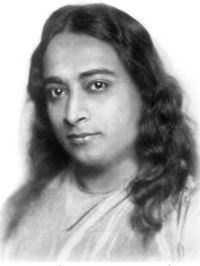
The question, “What is a Saint? arose recently, for a description of a saintly person was encountered. That description was really a listing of what discouraged happiness in a saintly person. It went something like this: “discourage happiness due to wealth and family, possessions, marriage and sexuality, or material longevity“. That gave me pause. I had to stop and think, What maketh a saint?? And so this website has come about.
I suppose there are many things you can say about saints. I’d like to open a window not just to the plaster saints, those with halos and statues, but also to the saints and inspiring spiritual adherents of other religions. Why should great saints, sants, acharya, gurus, godmen, godwomen, mystics and muslim pirs be excluded from consideration as saints? Don’t they inspire people too?
So there is your first conclusion about saints. They inspire.

Saints come from all traditions. Most of the well known saints come from the Christian faith. Hinduism has saints also: think of the gurus who are entombed alive, and continue to guide their devotees when the body no longer exists. In the north of India, there is the Sant tradition, which includes men and women, poets and philosophers. We might also consider the gurus of the Sikh tradition. Would you call them saintly people, the ten gurus of Sikhism? Considering these gurus, we may also look to those who died for their faith, martyrs. Pope John Paul II made hundreds of saints; he simply proclaimed them martyrs for the faith, and that was that!
Martyrdom was a little more serious than a simple proclamation: St Thomas More, Henry VIII’s Chancellor, was executed for refusing to take the oath of supremacy of the Crown in the relationship between the kingdom and the church in England. Martin Luther is another well known dissenter, as was the more modern Archbishop Oscar Romero, who was assassinated at the altar while celebrating the rites of the Christian Church.
There are others we might consider saints: the great artists Michelangelo and Rembrandt. Others might include Fra Angelico, and the great composer Johann Sebastian Bach. Poets and pilgrims are also mentioned as saintly persons. What is the character of a saintly person, a spiritual beacon? What attracts us to them?
We might say they are role models of duty, devotion and discipline. Many people are termed saintly for they bear their lot in life without complaining; said to be long-suffering. Some are said to be exemplars: they set an example to follow in adherence to faith and practice of devotion. Some might aver that saintly persons are people who found that self-effulgent light, within, without, and shared the pathway to the light for others to follow. Thomas à Kempis and his work, Imitation of Christ is one such example followed through the ages. The Sufi mystic Kabir and his poems are honoured by Sikhs and Hindus.
Pilgrimages to Shrines of Saints are common in many religions. Christians, Buddhists, Hindus, Jains, and people of the Jewish faith all go on pilgrimages. Pilgrimages are an exercise of faith; people go to the shrine or temple, in order to obtain spiritual benefits. One ancient pilgrimage has recently been promoted in a film, starring Martin Sheen. This is called The Way. Thomas Avery is an American ophthalmologist who goes to France following the death of his adult son, Daniel, killed in the Pyrenees during a storm while walking the Camino de Santiago (the Way of St. James), a Catholic pilgrimage route to the Cathedral of Santiago de Compostela in Galicia, Spain. Tom’s purpose is initially to retrieve his son’s body. However, in a combination of grief and homage to his son, Tom decides to walk the ancient spiritual trail where his son died, taking Daniel’s ashes with him.

Pilgrimages and yatras aside, we might say that saints are departed individuals of recognised sanctity who are venerated in a religious environment. Death of the saint is no barrier to communion with or veneration of the saint. The saint may be said to have restored the image and likeness of God, and to be in the company of the Divine (or closely united) and whose intercession or benefices or teachings has efficacious results. This might relate to one or another aspect of any saint in any religious tradition. Saints inspire. You might say that they give us a “hand up” on the ladder of divine ascent, as do saintly persons.
The spiritual aspirants and devotees of old reached their goal through Peace only. Peace gave Ramdas, Tukaram, Kabir, Thyagaraja, Nandanar, etc., the fortitude needed to bear all the calumny, torture and travail that was their lot. If spiritual aspirants base their efforts on these examples, they will be free of anger, despair or doubt. The accounts of their struggles and successes, if contemplated upon, are more useful to the aspirant than the contemplation of the powers and accomplishments of the Lord! They will help you, the reader, to try out in your own experience the methods, which these others developed. One can attain Peace by recalling how they overcame handicaps, bore troubles, and what paths they trod to cross over to the other bank.
You may browse the articles in the Saint’s category here, or choose from below:
Spiritual Stars and Saints for a New Era
- 40 Verses – by Ramana Maharshi
- Abhishiktananda
- al-Ghazali
- al-Ghazali: The Seven Obstacles
- Al-Hallaj
- Anandamayi Ma of Bengal
- Antonio Stradivari – Instrument Maker for the Divine
- Archangel Jophiel (or Zophiel)
- Avicenna
- Baal Shem Tov – Master of the Good Name
- Bahá’u’lláh
- Bammera Potana
- Bede Griffiths
- Chaitanya Mahaprabhu
- Chandra Khonnokyoong
- Dame Julian of Norwich
- Daniel Andreev – Rose of the World
- Dietrich Bonhoeffer
- Dorothy Day
- Eight Manifestations of Padmasambhava
- Elijah Benamozegh
- Florence Nightingale
- Fr. Tissa Balasuriya, OMI
- Francis of Assisi
- FYI – Baba Vangelia, the Blind Prophet
- Galileo Galilei
- George Fox – Founder of the Society of Friends (Quakers)
- Guru Gobind Singh
- Guru Nanak
- Guru Tegh Bahadur
- Hakuin Zenji also known as Hakuin Ekaku (1686 1769)
- Hazrat Rabia Basri
- Hazrat Sai Roshan Ali Shah
- Hermes Trismegistros
- Hildegard von Bingen
- Hilma af Klint
- Howard Murphet
- Ibn-al-Arabi
- Jain Saint: Shrimad Rajachandra
- Jakob Böhme
- Jalal al-Din Rumi
- Jalaram Bapa of Gujarat
- Janabai – Woman Sant of Maharashtra
- Jhulelal – God and hero of the Sindhi Hindu Community
- Jnanadeva of Alandi
- Joan of Arc
- Johann Sebastian Bach – Devotion in Music
- June 2022 Full Moon and Kabir Jayanti
- Kabir
- Kabir Jayanti 2020
- Khwaja Muhammad Baba as-Samasi
- Mahatama Gandhi
- Martin Luther King
- Mata Amritanadamayi Devi
- Mata Amritanadamayi Devi – Address to the United Nations Assembly
- Milarepa, Tibetan Buddhist Saint
- Mirabai
- Mother Meera
- Nelson Mandela
- Nichiren Dashonin
- On Buddhism
- Padmasambhava
- Pope John Paul II
- Pope John XXIII
- Rabbi Abraham Isaac Kook
- Rabbi Martin Riesenburger
- Rabindranath Tagore
- Ralph Waldo Emerson
- Rudolf Steiner
- Sai Baba of Shirdi
- Sai Baba of Shirdi – Birth and Early Life
- Sai Baba of Shirdi – Later Works
- Sai Baba of Shirdi – The Early Years
- Saint Francis of Assisi
- Saints for a New Era
- Sant Kabir
- Sarada Devi – The Holy Mother
- Siddharoodha Swami
- Sotesan and Won Buddhism
- Sri Aurobindo: Thoughts on Buddha as an Avatar of Lord Vishnu
- Sri Ramana Maharshi – the Sage of Arunachala
- Sri Yerriswamy Yerrithatha – Saint of Chellagurki
- Srimanta Sankardev of Assam
- St George
- St John of the Cross
- St Maximus The Confessor
- St Seraphim of Sarov
- Surdas
- Swami Karunyananda
- Swami Ramalingam – Vallalar
- Swami Vivekananda
- Swedenborg
- Tenzin Gyatso – The Fourteenth Dalai Lama
- The Great Freedom Teachings of Candice O’Denver
- Thích Nhất Hạnh
- Thomas Merton
- Tukaram
- Tulsidas
- Vallabhacharya Jayanti
- Who Am I? by Ramana Maharshi
- William and Catherine Booth: The Salvation Army
![]()

